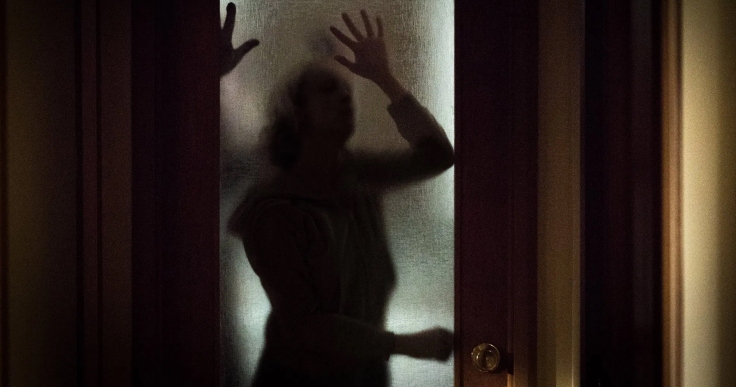Until now, I never knew the word ‘sidequel’ even existed. This curious portmanteau — an awkward combination of ‘side’ and ‘sequel’ — refers to sequels whose stories coincide with the events of a previous film. As you can imagine, it’s not a popular kind of storytelling. And, considering the end result of Nicolas Pesce‘s The Grudge, I can understand why.
Sixteen years have passed since Takashi Shimizu‘s The Grudge was released. It stands out in a wave of horror remakes that flooded the 2000s. While I’ve always appreciated that version more than others, I’m finding it hard to recommend the latest Grudge. It’s just never a good sign when audience members collectively groan as the end credits roll. My reaction may not have been as visceral, but I was still left speechless by Pesce‘s mainstream debut.

For many, the most splitting thing about The Grudge is maybe how its story is told. Although the other movies were equally non-linear, this one struggles to keep things as coherent. Going back all the way to 2004 before Sarah Michelle Gellar‘s character showed up at the notorious Saeki house, we’re introduced to the original live-in nurse (Tara Westwood), and we find out what happened to her once she returned to America. Apparently, the ‘grudge’ curse can travel. What follows is a series of time jumps that all but disjoin the entire film. They would have better worked as self-contained, anthology-like segments. Meaning, we go back and forth so much that it’s difficult to maintain any sort of emotional attachment to these characters. There’s surface-level sympathy, of course. The narrative happens to be so tugging that you’re too exhausted to care by the end.
The idea of Kayoko’s spectral rage reaching outside of Japan has already been explored in the previous two sequels. How exactly the rules work now, I have no idea—and neither do the filmmakers, I suspect. Regardless, the movie’s case of contagious ‘grudging’ set between 2004 and 2006 is not entirely amiss. Seeing Kayoko’s power attach to other parties beyond her immediate reach is compelling when considering the mythos of this convoluted franchise. It’s a good proposal that obviously got lost along the way.
Deviating from the sizable dogpile the movie has already incurred, I bring up the film’s polarizing performances. Not too many heavy hitters here, and the more recognizable faces are either underused, or they’re saddled with inept dialogue. However, there is an attempt to make this a thoughtful movie. The weight of grief is felt all throughout. The desperation of Frankie Faison‘s character’s story alone is palpable, if not misguided. Andrea Riseborough conveys a quiet form of agony that is more haunting than all of the ghosts combined.

Be that as it may, The Grudge flounders as a horror movie. It’s so consumed by its tales of emotional pain and coping with loss that the scares feel tacked on. Even dated. Not once will you jump despite that being the desired effect. There’s also the look of the movie that reminds one of 2000s horror that was both confusedly lit and overly yellowed. Pesche respectfully pilfers the palettes of 1970s giallo in his past works, namely Piercing, all the while aiming for a neo-noir impression. You can see that in some scenes here, but any amount of success is then diminished by shoehorned frights. Conversely, the movie doesn’t steer away from gore.
It feels unfair to beat up on a film that was clearly the product of two different visions. Reshoots and retooling possibly didn’t help matters either. But, unless there is a massively rectifying director’s cut in the near future, this is the movie we have now. There are times in The Grudge where you can see Pesche come through and deliver the energy that made his other films so praised. Unfortunately, those moments are few and far between. Perhaps the greatest horror here is seeing a director’s talent be so misused.


Leave a comment